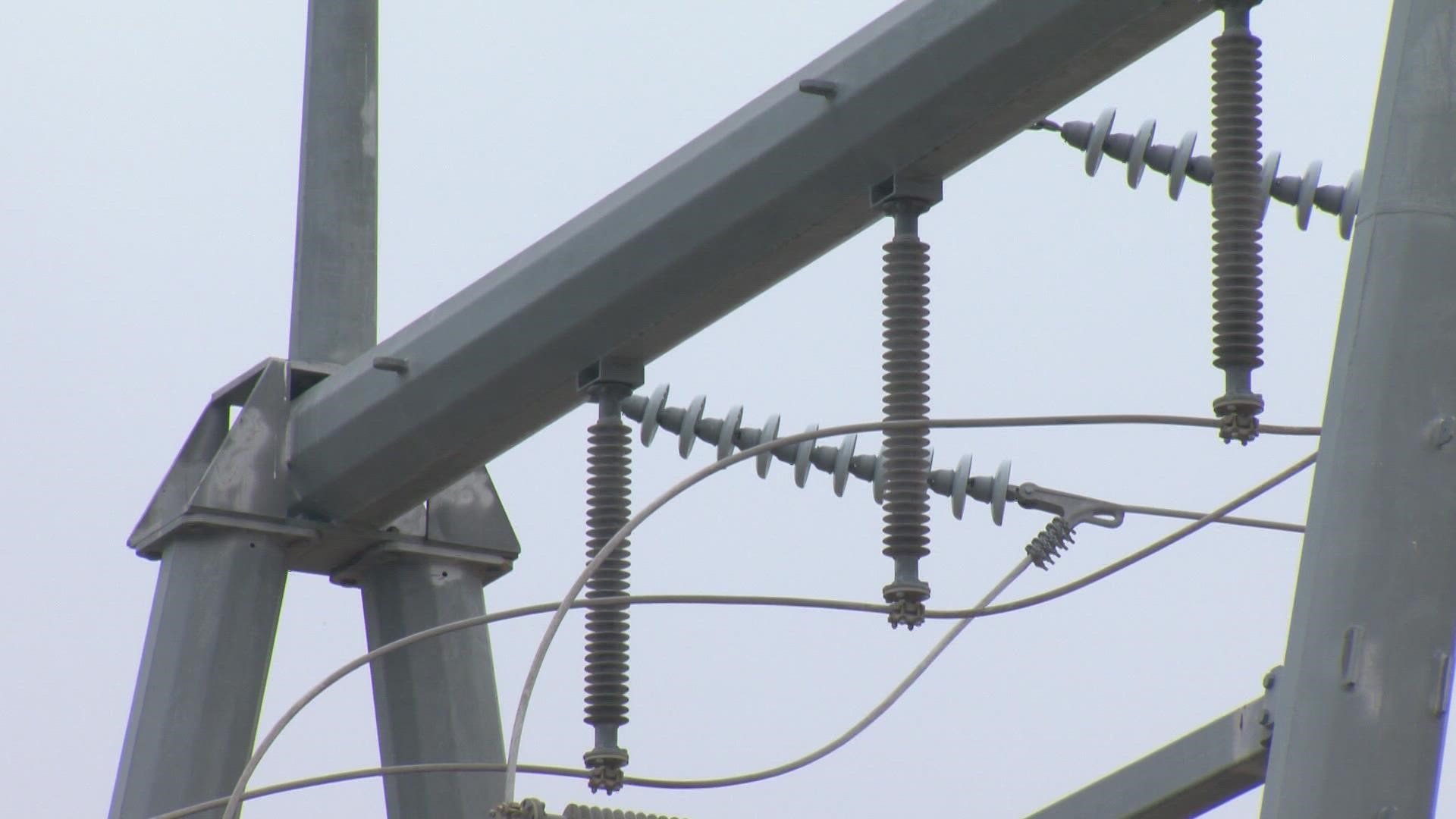SAN ANTONIO — Texas's electricity supply met demand Monday, ending the immediate threat for rolling blackouts.
The Electric Reliability Council of Texas, the state's grid manager, asked residents to conserve power during the afternoon. The council forecasted record temperatures would prompt unusually high demand during times of low-wind energy output.
But temperatures were cooler than expected, and ERCOT data indicates Texans probably complied with conservation requests.
"That little bit really makes a big difference when we're coming this close to that balance of supply and demand," said Dan Cohan, an associate professor of environmental engineering at Rice University. "ERCOT deserves credit for today for managing the grid properly."
Solar and wind farms again produced enough power to ensure ample supply. Renewable energy sources have consistently prevented power deficits throughout the year.
"We saw the grid operating as it's supposed to," Cohan said.
Monday's power crunch represented one of the toughest tests for the state's electrical grid since the Feb. 2021 winter storm, which killed hundreds of Texans.
ERCOT asked backup generators to keep 2.8 gigawatts of power on standby Monday, enough to power more than 500,000 homes.
"The ERCOT grid was right on the edge," said Andrew Dessler, professor of atmospheric sciences at Texas A&M. "It was one of those situations where, if everything went right, we'd be okay. But if anything went wrong, there'd be problems."
Demand peaked Monday at around 78,000 megawatts, about 5,000 megawatts less than supply capacity. One megawatt is enough to power about 200 homes on a hot summer day.
ERCOT has instituted rolling blackouts four times since the council began managing the grid in 1970. It's asked consumers to conserve power nearly 50 times since 2008.
But Wednesday's conservation call raised energy experts' eyebrows. The grid manager asked customers to cut electricity usage because of record-high demand and "low wind."
The ERCOT news release indicated wind would generate less than 10 percent of its potential capacity Monday. To support its claim, the grid manager highlighted forecasts for 2 p.m. - a time before the sea breeze reaches Texas.
Texans usually demand the most power around 5 p.m., when turbines along the coast generate far more electricity.
"They were trying to produce an excuse if the power went out," Dessler said. "They were trying to paint wind as the fall guy."
The sun typically shines brightest when the wind is calmest, meaning solar and wind power are anti-correlated. Texas relies far more heavily on wind turbines than solar panels, since the wind has historically been cheaper to harness.
But that is changing, Cohan said.
"If you look at projections of how much solar power is being added to the grid in the next one or two years - days like today, we wouldn't hear anything about," he added.
Dessler noted that wind and solar energy are especially predictable. Fossil fuels, lately, have not been so reliable.
Wind indeed underperformed by about six gigawatts Monday, Dessler said. He noted the state's thermal producers, consisting of coal, gas, and nuclear plants, also underperformed by about six gigawatts.
Each expert advocated for more solar generation, along with boosted transmission infrastructure to carry electricity to major cities.

